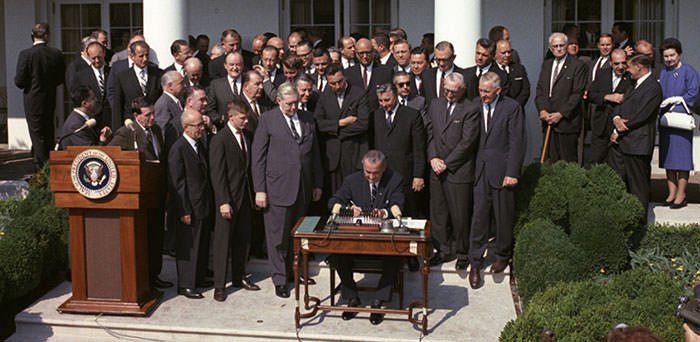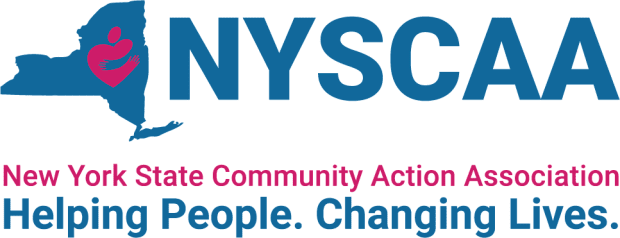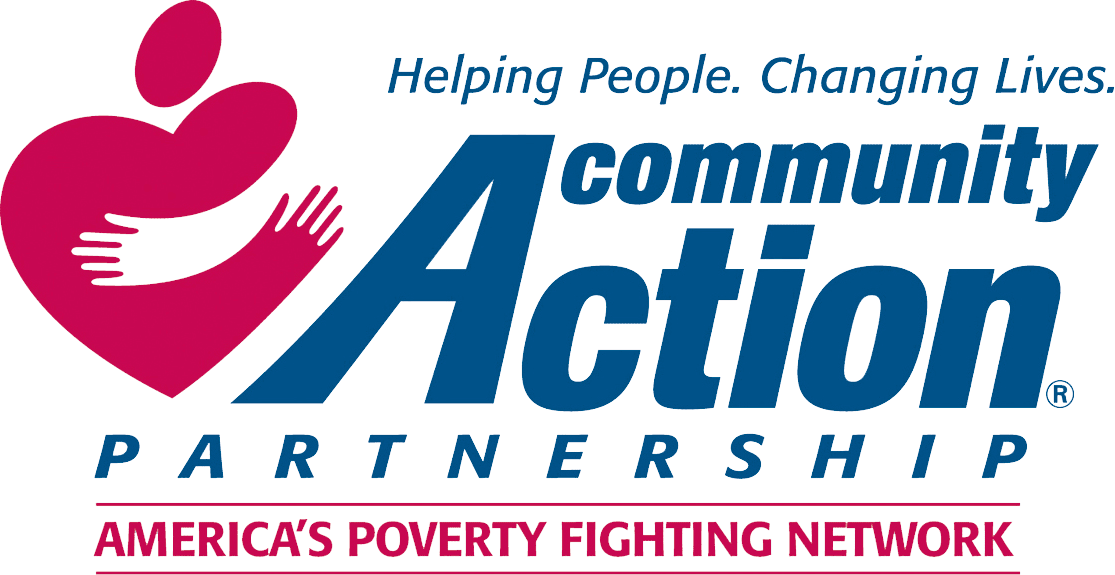What is Community Action?
PEACE, Inc. has served as the Community Action Agency (CAA) for Onondaga County since 1968. The agency proudly belongs to a network of more than 1000 CAAs strong. So what is Community Action? What are its origins and values? What makes Community Action so unique?
1) An Unconditional War on Poverty
Community Action originates from President Lyndon B. Johnson’s call for an Unconditional War on Poverty during his first State of the Union Address in 1964. As they looked to improve the lives of all Americans equitably and irrespective of circumstance, LBJ and his team passed the Economic Opportunity Act of 1964. From the Act, not only did Community Action emerge; so too did many of its programs, including Head Start, Job Corps, Work-Study programs for university students, VISTA (Volunteers in Service to America), Neighborhood Youth Corps, as well as adult education and job training.

President Johnson signs the Economic Opportunity Act of 1964
2) A Champion of Maximum Feasible Participation
The most controversial -and ultimately most impactful- part of the Act was its promotion of Maximum Feasible Participation. Simply put, Maximum Feasible Participation demands that those living in poverty should determine the programs that would help them the most. Testifying before Congress, then Attorney General Robert Kennedy outlined how Maximum Feasible Participation radically departed from previous government-sponsored manifestations of social reform. He stated that,
“The institutions which affect the poor – education, welfare, recreation, business, labor – are huge, complex structures, operating far outside their control. They plan programs for the poor, not with them. Part of the sense of helplessness and futility comes from the feeling of powerlessness to affect the operation of these organizations. The community action programs must basically change these organizations by building into the program real representation for the poor. This bill calls for ‘maximum feasible participation of residents.”
Even today, Maximum Feasible Participation remains the guiding principle of Community Action, as a CAA’s Board of Directors are required to be tripartite, i.e. one-third represent elected public officials, one-third community leaders, and one-third of people living in poverty or their representatives. Such a structure ensures diversity, equity, and inclusiveness.
3) Federal Funds spur Localized Solutions
Ultimately, Maximum Feasible Participation helps ensure that the Federal Dollars allocated to CAAs -commonly in the form of Community Service Block Grants (CSBG)- meet local needs. The funds are necessarily flexible to spur immediate action, to coordinate neighborhood efforts, and to empower individuals in their quests for self-sufficiency. Community Action can thus combat poverty comprehensively and strength the efforts of nonprofits that address specific barriers towards self-sufficiency, such as employment, health care, housing, education, and more. In tandem with Maximum Feasible Participation, ROMA -or the “Results Oriented Management and Accountability” system- is used by all CAAs to make decisions, meet community needs, and ensure both accountability and impact.
To learn more about Community Action, visit:


